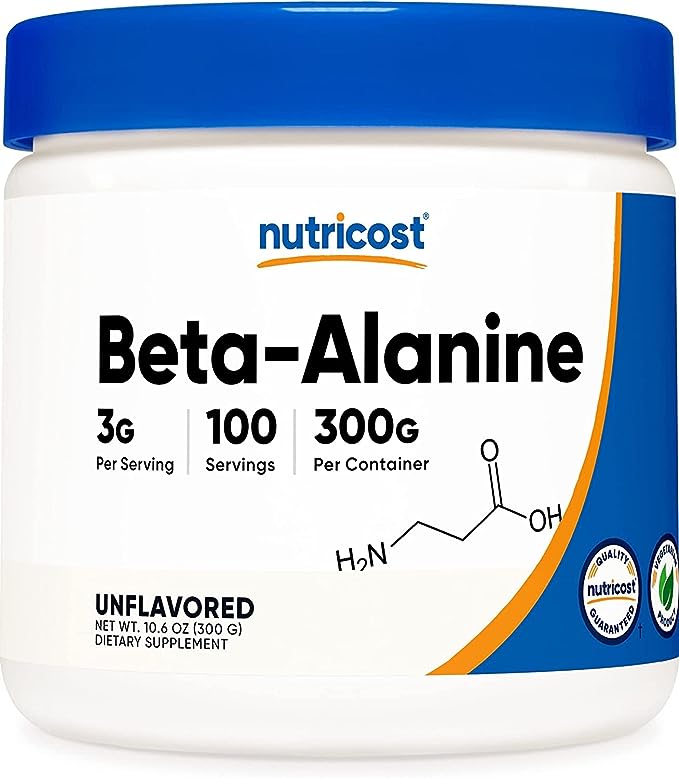Citrulline malate and beta-alanine are two popular supplements used by athletes and bodybuilders to increase muscle growth and strength. While both supplements are effective, they work in different ways and have unique benefits. Let’s compare citrulline malate to beta-alanine and help determine which supplement is best for you.

Citrulline Malate for Muscle Growth and Strength
Citrulline malate is a compound made up of the amino acid citrulline and the organic salt malate. It is commonly found in pre-workout supplements and is known for its ability to increase blood flow, reduce fatigue, and improve muscle endurance.
One of the main benefits of citrulline malate is its ability to increase nitric oxide (NO) production. NO is a vasodilator that relaxes blood vessels and allows for more blood to flow to the muscles. This increased blood flow delivers more oxygen and nutrients to the muscles, which can help improve muscle growth and recovery.
In addition to its effects on blood flow, citrulline malate has also been shown to reduce fatigue and improve muscle endurance. A study published in the Journal of Strength and Conditioning Research found that participants who took citrulline malate experienced a significant increase in the number of reps they could perform during a bench press exercise.
The recommended dosage of citrulline malate for muscle growth and strength can vary depending on several factors, including an individual’s body weight, tolerance, and specific goals. However, there are generally accepted guidelines that can serve as a starting point. A common recommended dosage range is between 6 to 8 grams of citrulline malate 60-90 min prior to workout per day. This dosage may be divided into 2 smaller doses 3- 6 grams per day if you experience any digestive discomfort and should be taken on off days as well.
Beta-Alanine for Muscle Growth and Strength

Beta-alanine is a non-essential amino acid that is commonly found in pre-workout supplements and is known for its ability to increase muscle carnosine levels. Carnosine is a dipeptide that helps buffer hydrogen ions in the muscles, which can delay fatigue and improve muscle endurance.
One of the main benefits of beta-alanine is its ability to improve high-intensity exercise performance. A meta-analysis of 15 studies found that beta-alanine supplementation significantly improved exercise performance during high-intensity exercise lasting 60 seconds or less.
Beta-alanine has also been shown to improve muscle growth and strength. A study published in the International Journal of Sport Nutrition and Exercise Metabolism found that participants who took beta-alanine for 8 weeks experienced a significant increase in lean body mass compared to those who took a placebo.
The recommended dosage of beta-alanine varies depending on individual factors such as body weight, tolerance, and specific goals. However, a common dosage protocol for beta-alanine is to take 3-6 grams per day, divided into smaller doses, for a period of 4-6 weeks. This is known as the “loading phase” and is designed to saturate the muscles with carnosine.
During the loading phase, it is generally recommended to take 1-2 grams of beta-alanine four times a day, evenly spaced throughout the day. This can help maintain consistent levels of carnosine in the muscles.
After the loading phase, a maintenance dose of 2-3 grams per day is commonly used to sustain the increased carnosine levels. This dose can be taken in a single serving or divided into smaller doses, depending on personal preference.
It’s important to note that beta-alanine may cause a harmless tingling sensation in the skin, known as paresthesia, especially at higher doses. This sensation is temporary and subsides on its own.
Comparison of Citrulline Malate and Beta-Alanine
Citrulline malate and beta-alanine are both effective supplements for improving muscle growth and strength. However, they work in different ways and have unique benefits.
Citrulline malate is best for improving muscle endurance and reducing fatigue. It does this by increasing blood flow and oxygen delivery to the muscles, which can improve muscle endurance and delay fatigue during exercise.
Beta-alanine, on the other hand, is best for improving high-intensity exercise performance and increasing muscle carnosine levels. It does this by buffering hydrogen ions in the muscles, which can delay fatigue and improve muscle endurance during high-intensity exercise.
Can I take Citrulline Malate and Beta-Alanine together?
Yes, in fact, many choose to stack these supplements to potentially maximize their benefits. When combined, citrulline malate and beta-alanine can potentially complement each other’s effects. Citrulline malate improves blood flow and nutrient delivery to the muscles, while beta-alanine helps buffer lactic acid and delays fatigue. This combination may contribute to improved workout performance and muscle building.
Which Supplement is Best for You?
The best supplement for you depends on your individual goals and needs. If you are looking to improve muscle endurance and reduce fatigue during exercise, citrulline malate may be the best supplement for you. If you are looking to improve high-intensity exercise performance and increase muscle carnosine levels, beta-alanine may be the best supplement for you.
It is also important to note that both citrulline malate and beta-alanine are safe and effective supplements when used properly. It is recommended that you speak with a healthcare professional before starting any new supplement regimen to ensure it is safe for you.
In conclusion, citrulline malate and beta-alanine are two effective supplements for improving muscle growth and strength. While they have different benefits, they can both be effective additions to a well-rounded supplement regimen.


Omega-3 Fatty Acids for Fat Burning and Weight Loss
Unveiling the Power of Curcumin: Understanding its Mechanism, Benefits, and Usage
Nitric Oxide Supplements – What are they?